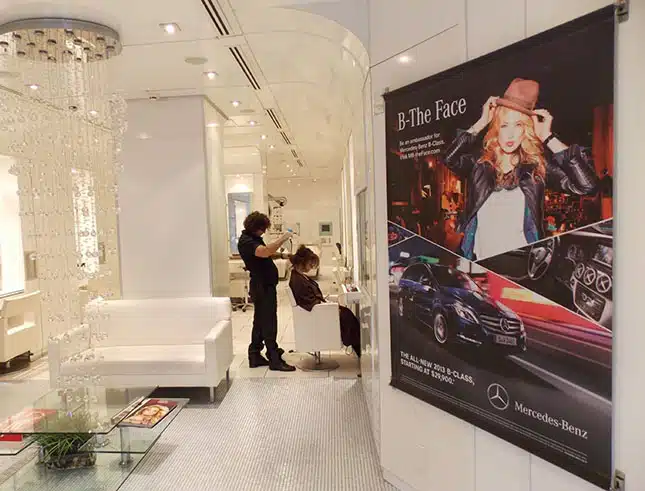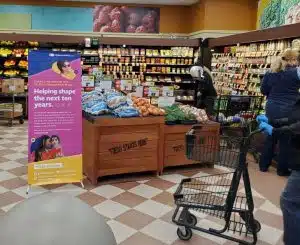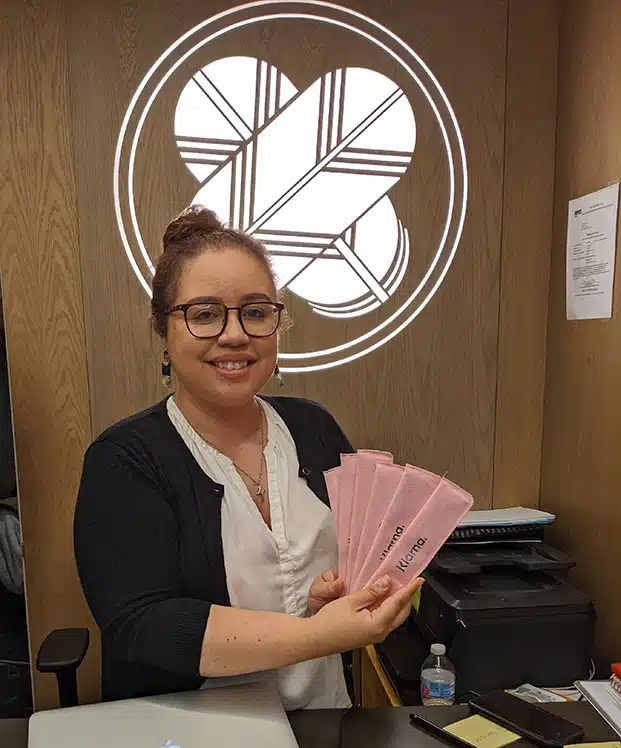Weirdly, COVID-19 may have slowed the long decline of brick-and-mortar stores.
After months of being trapped in their homes, Americans have been thrilled to get back to regular, everyday activities such as going to the movies, watching concerts, and attending amusement parks.
While we used to treasure the experience of shopping online in our pajamas (and we still do, to a good extent; online shopping is thriving), we no longer prefer it exclusively to going to stores. More people are doing in-store shopping now than a year ago, and the pandemic has even inspired many retail leaders to reexamine their conceptions about physical stores.
All this is to say, it’s a great time to put your message in a brick-and-mortar location. Stores offer endless advertising opportunities, and they often reward the most creative thinkers. You can make a splash with unusual or unique campaigns.
In-store advertising reaches lots of people, and you can get product exclusivity at some stores, depending on what you advertise. At a time when advertisers want to find new ways to gain attention, with so much advertising online leading to clutter that can muddy your messaging, having a physical presence in a store can improve recall and also offer a chance to stand out in other ways. Here’s everything you need to know about in-store advertising in 2022.
What Is In-Store Advertising?

In-store advertising covers any campaign conducted in a retail environment. That may include malls, grocery stores, pet care chains or even mom-and-pop retailers with strong reputations.
Locations for In-Store Advertising

You can find in-store advertising in just about any location. Some of the most popular venues include:
- Grocery stores.
- Pharmacies.
- Pet care
- Sporting goods stores.
- Health food or supplement stores.
The biggest hurdle to in-store advertising may be getting the allowance from the property to get your signage up and the production that goes into creating the signage.
Examples of In-Store Advertising
The opportunities are only limited by imagination. You can turn anything into advertising, but some traditional winners include:
- Digital, such as digital menu boards, video kiosks, video walls and wayfinding machines that offer directions or price checks.
- Wi-Fi, including messages delivered through a beacon right to people’s cellphones when they walk past a display.
- Banners, like those hung over a display to call attention to an in-store advertiser or the ones flying from walls.
- Live product demonstrations, such as handing out free samples of food or showing how a product works.
- Shopping carts, which encompasses ads on the sides as well as on the handle.
- On actual products, such as stickers on bananas, individual eggs, frozen bags of fish or magazines.
Price of In-Store Advertising
Brands should have a decent-sized budget to try in-store advertising. It generally requires a commitment of a minimum of 20 stores and runs anywhere from $500 to $800 per store. A full campaign can cost a minimum of $10,000 to $40,000, which is more than you’ll pay for a billboard in Los Angeles.
Best Product Categories for In-Store Advertising
As you’d expect, in-store advertising thrives when promoting products that are readily available in the store. For example, handing out samples of a meatball and directing customers to the freezer case just two rows over significantly increases conversion rates. This direct connection ensures the product stays top of mind while shoppers are already in the buying mindset.
Food, beverage, and other grocery store staples naturally perform well. However, in-store advertising can also be highly effective for less obvious campaigns targeting broad audiences. For instance, during a Census awareness campaign, grocery stores proved to be ideal locations for public education. Since the Census counts everyone, and everyone needs to buy food, this strategy allowed the message to reach a diverse and comprehensive audience.
Family-oriented products or initiatives are another category that can benefit from in-store advertising. Shoppers often bring information home to share with their households, making grocery stores an excellent venue for campaigns addressing public health or community issues.
Conversely, you’ll find fewer entertainment or music brands opting for in-store advertising. These industries often perform better in venues tailored to their specific demographics. Stores, while diverse, target a broad audience spanning various ages, races, and income levels, which makes them less ideal for niche campaigns that require a narrower focus.
Advantages of In-Store Advertising

In-store advertising can benefit brands in many ways, including:
- Engagement: People who walk into stores are generally engaged. They walk into the store looking for something specific or, if they don’t have something in mind, must be open to trying something new. They trust your brand and are receptive to your suggestions.
- Decision-making: According to one survey, more than three-quarters of consumers say they are more likely to buy after they see or hold a product in a store. Plus, almost two-thirds say they regularly make impulse purchases in stores. Catch their attention here, and you can make a sale. Very few forms of advertising offer the opportunity for such instantaneous conversion.
- Sharing information: In-store advertising provides a chance to share information shoppers may not have otherwise seen. You can tell them about a sale or guide them to the aisle where the advertised product is sold. No matter what info you pass along, shoppers will find utility in it.
- Timeliness: You can swap messages quickly to get the most relevant information to shoppers. Whether you want to advertise a sale or a special offer, in-store advertising offers an excellent venue.
- Educational value: Not every campaign is about conversions. In-store advertising offers a platform for education as well as promotion. You can give out information about critical issues or explain how a product works.
- Entertainment: People go shopping for two reasons: out of necessity and fun. You can stand out from other brands by recognizing the latter. Providing excellent entertainment to your customers can produce conversions just as effectively as showing them something they need.
Get in Touch to Find Out More About In-Store Advertising
Interested in trying out in-store advertising? Contact DASH TWO to discuss your options or pricing.

